High res graphics from the Impacts of seabed disturbance in the Waikato region report produced by Coast & Catchment. Please see the full report for context and reference the report if citing a source.






Mostly just stuff I am doing to help the planet






High res graphics from the State of Our Gulf 2023 so everyone can access them. Please see the full report for context and reference the report if citing a source.









Our feedback on the strategy asks Auckland Council to consider the impacts development has on shorebirds and to identify shorebird feeding, roosting and nesting habitat losses due to Sea Level Rise. Post your feedback here.
Logging where and when I have been looking for the exotic Caulerpa species that have been recently introduced to Aoteroa New Zealand.
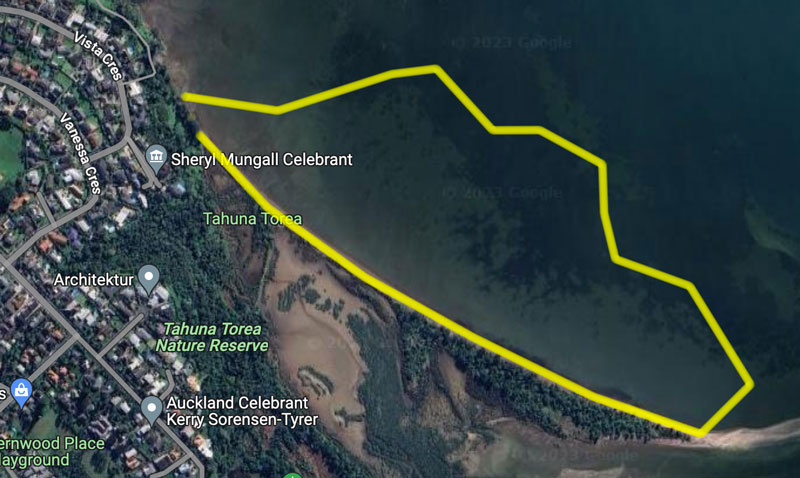
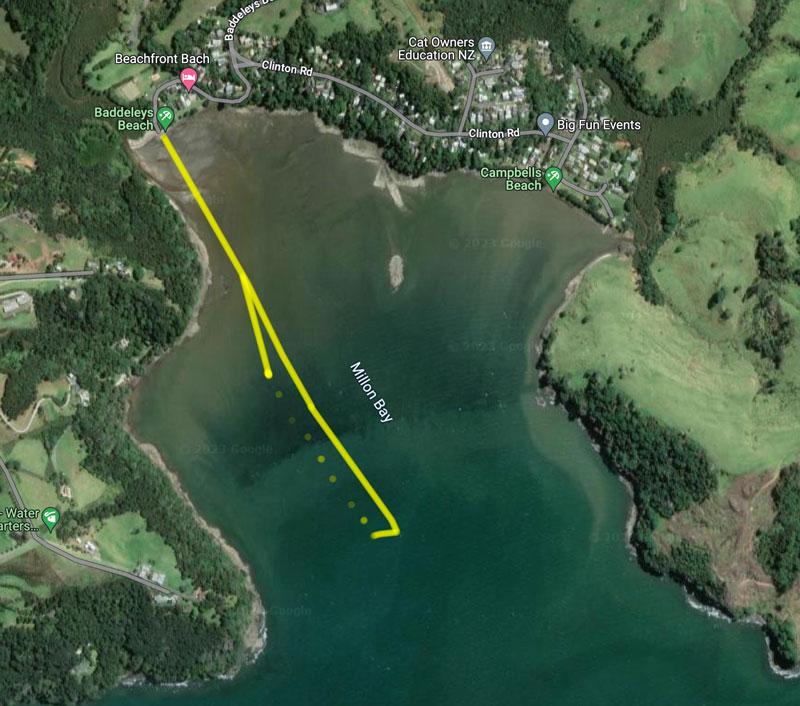
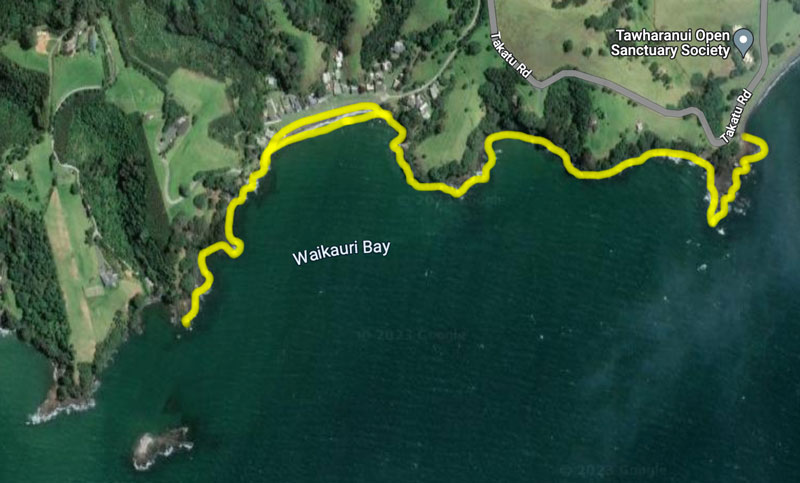
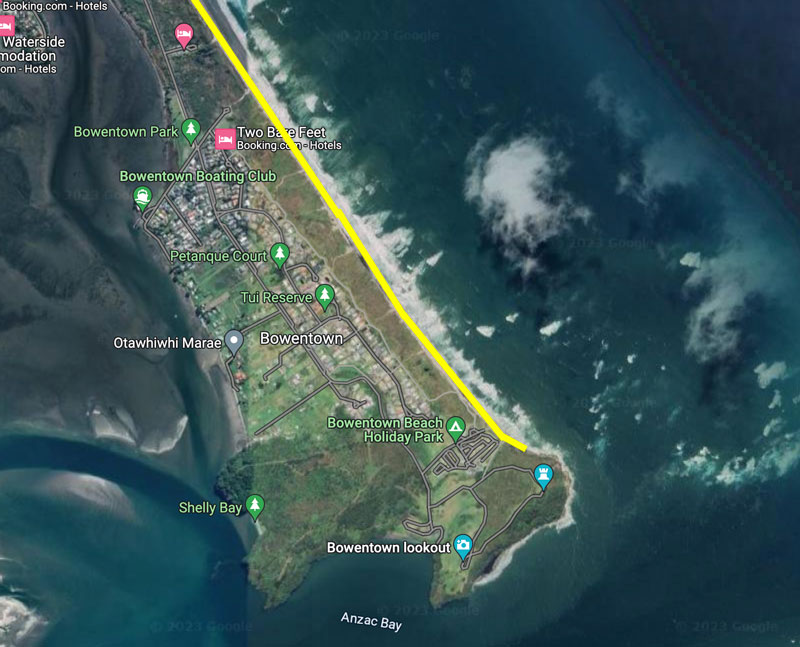
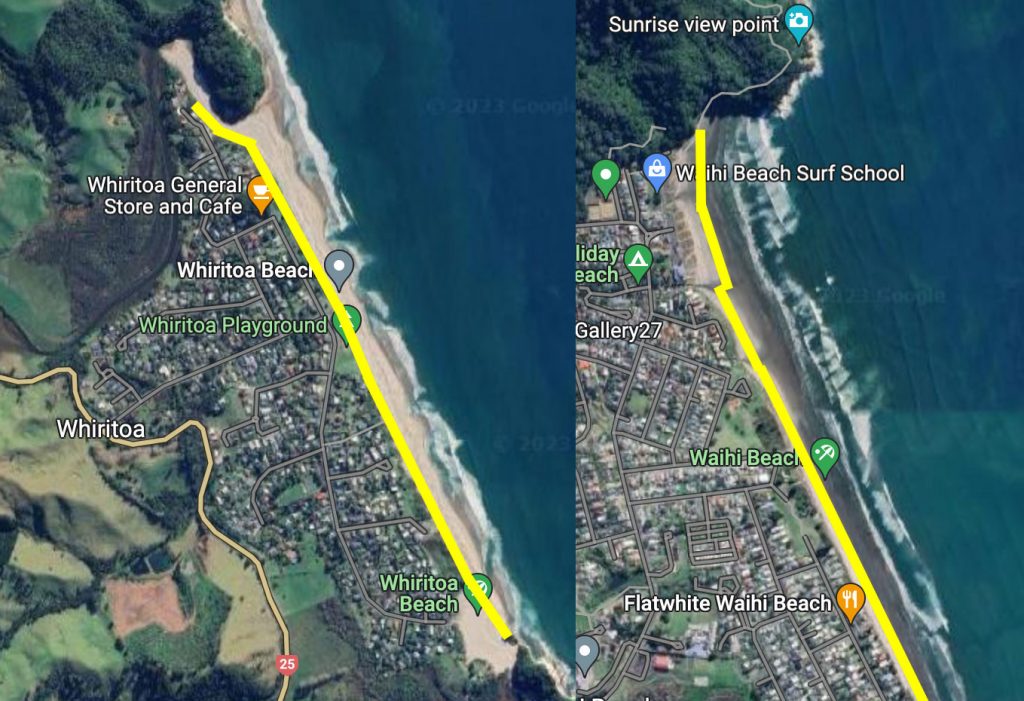
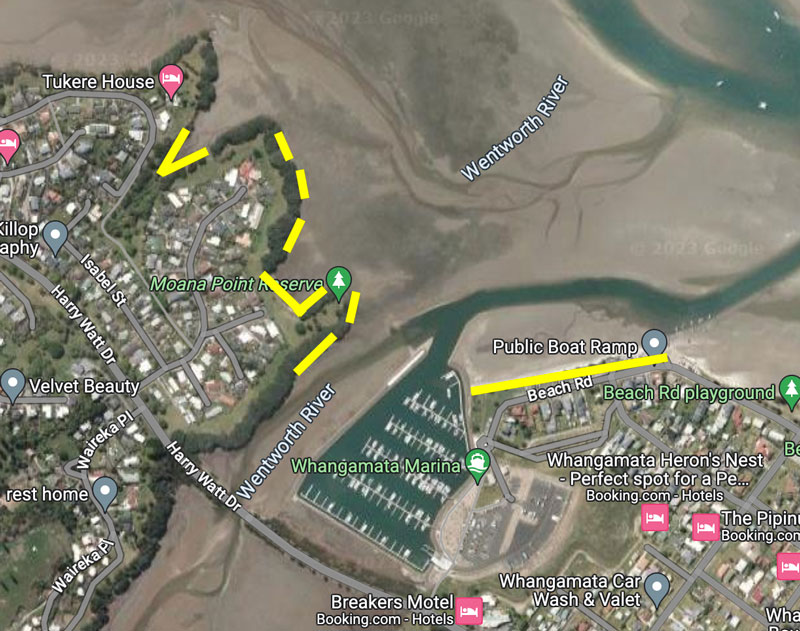
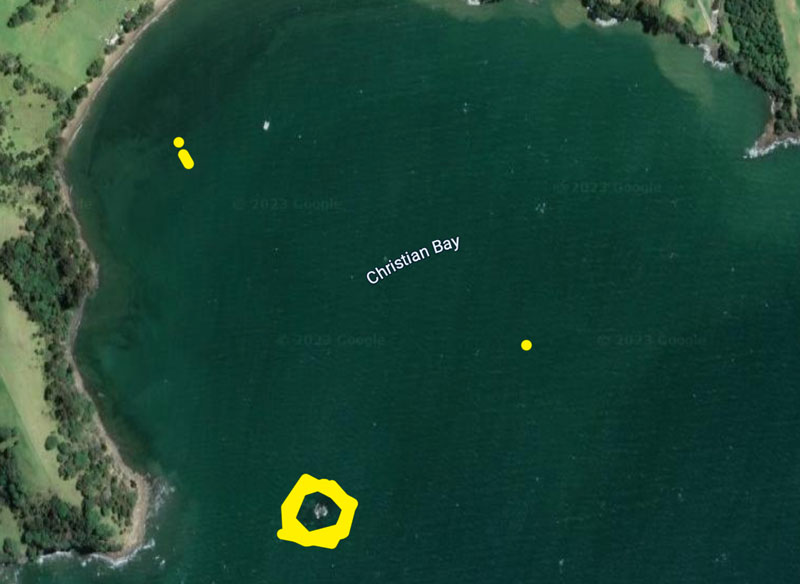
This summer many people asked me about a front page article on the New Zealand Herald about a large black marlin that was killed off the coast of Northland. They wanted to know what I thought about it because they knew I would disapprove. The article did not include other views on the anglers “monumental effort” which took 10 hours. People posted negative reactions to the article on Facebook calling it animal torture but there was a shortage of facts about conservation and moral concerns.
In Aotearoa New Zealand the fishery of marlin is 100% recreational since 1988. Billfish caught overseas should not be bought to eat because bycatch from this fishery is going extinct (whales & dolphins, sharks, seabirds and turtles). Our commercial catch of billfish is not targeted due to a Memorandum of Understanding Between Commercial & Recreational Fishing Interests October 1996. However there is a targeted commercial Swordfish fishery. Commercial landings have fallen dramatically over the last 10 years indicating a change in fish population, fishing methods or reporting, the former is most likely and concerning *. The 126 tonnes of landed in the most recent year represents more than 1,000 fish, more than the number of animals reported in the recreational tag and release programme. Other billfish like marlin are released whether the animal is alive or dead upon capture. Cameras on all commercial surface longline fishing boats would tell us how many of these animals are being released (alive or dead).

The population trend and conservation status of each species is assessed by the International Union for the Conservation of Nature (IUCN). This is how they categorise the threat of extinction for all species on our planet.

Here is how our billfish populations are doing in 2023 with recent catch data from the tagging program.





Most of the recreationally caught animals are striped marlin, although they are categorised as Least Concern, the population in the Southwest Pacific is overfished with an estimated decline of 25% between 2001 to 2016.
Aotearoa New Zealand participates in the Western and Central Pacific Fisheries Commission to manage billfish populations. This 26 member commission is slowly making progress towards sustaining the world’s biggest tuna fishery, but failing to manage bycatch including billfish. The commission meets just once a year to make decisions via consensus. Aotearoa New Zealand is responsible for a very small percentage of the fishery. We have the moral high ground and are well positioned to argue for changes to stop these species from going extinct.
While commercial billfish bycatch in Aotearoa New Zealand is unknown, recreational fishers both target and land billfish. Because our fisheries are recreational, reporting on how many billfish are caught is voluntary. The latest report on the tagging programme notes an increase in the number of boats and a probable increase in unreported catch. This needs to change and more information would help us with our questions about the conservation status of these species. Climate change will push billfish populations towards the poles, increasing catches in Aotearoa New Zealand and masking our ability to detect population decline here.
The sports fishing industry awards and celebrates the capture of the largest fish. Large old fish produce more eggs and sperm than younger fish. Female billfish are larger than males. This means the most productive members of the population are landed for records, trophies and prizes. A large blue marlin at a weigh-in station does not represent a gain of 500kgs of freezer meat, but a loss of millions of eggs which could have helped rebuild the population. The situation is just as important for our striped marlin which have lost 94% of their spawning biomass since 1960’s.

As our culture evolves fishing is becoming less about machismo and more about connecting with the environment. Recreational fishing industry leaders could do more to discourage fishing techniques that target species that are going extinct. They also need to find ways to land less big fish. It won’t be easy for them, change may take a generation. Is catch and release the solution?
About 800 of our billfish are caught, tagged and released every year. The tagging programme is voluntary for recreational and commercial fishers. On average only three of these are recaptured per year. The other 797 plastic tags (which cost $5 each) end up in the ocean. Some tags fall out, some sink to the bottom of the ocean with the exhausted fish.
Many billfish are released, all of them injured. The fish are vulnerable to shock, disease and predation.

Overseas studies have found survival is not great with one in seven released fish dying. Fishers gamble with the lives of these animals every time they put a hook in the water. The ‘catch and release’ practice makes a significant contribution to the sustainability of our share of the fishery – if its stopping those fish from being landed and killed. However it’s unquestionable that the fish would be better off without being caught at all.
The small number of recaptures have shown where our fish travel, but much more information could be gained by using satellite tags. Genetic sampling techniques are better conservation tools and have existed for more than five years.
With so little conservation value in the tagging programme, is it worth it?
Sportfishing is practiced by humans who primarily hunt for fun rather than food. It’s a blood sport where wild animals are stressed and wounded for the pleasure of the hunter. In 2003 scientists found that fish have the biology to perceive pain and demonstrate behaviours associated with pain. The science was controversial for more than a decade, but now seems settled and researchers have now moved on to what kind of painkillers to give fish in laboratory experiments.

Billfish respond to a hook in the mouth, throat or guts by trying to move away from the source of the pain. Fishers call this the ‘fight’. The amount of fight a fish will put up to reduce its suffering is extended by international game fishing rules. These rules are endorsed with additions from Legasea / The New Zealand Sports Fishing Council. They encourage fishers to try and land game fish on lighter line classes. This is thought to give fish a “sporting chance” as heavier fish can more easily break lighter lines. This makes the fights (which the fisher instigates for their own enjoyment) longer, it’s not uncommon for fights to last hours. This is done at the expense of the fish. Longer fights prolong the suffering of billfish and increase the chances of post release mortality due to physiological stress.
The New Zealand Society for the Prevention of Cruelty to Animals (SPCA) opposes big game fishing for sport due to the prolonged pain, injury and distress on the fish involved. SPCA advocates for a ban on the use of “light tackle” to catch big game fish.
The New Zealand Animal Welfare Act 1999 recognises fish as sentient animals. The activity recklessly ill-treats animals (an offence under section 28 A) it also contravenes other sections of the act (30A1-3). There is a NAWAC guideline on how to deal with practices which are inconsistent with the spirit of the Animal Welfare Act. The guideline asks ‘Is the suffering necessary’? It is not necessary and undeniably inhumane.
There is enough conservation and moral evidence to take the precautionary approach and stop the sport today, but I think it should be phased out, like big game hunting overseas.

Aotearoa New Zealand should show leadership by pushing for global population estimates using genetic tools. We need to do a better job of arguing for changes to international fisheries methods and quota. We can also show more leadership by mandating the reporting of caught billfish (both landed and released, commercial and recreational) and developing a Code of Welfare for sports fishing which will identify standards to prevent pain and distress.
* UPDATED APRIL 2024. Phil Clow (president of the Whitianga and Coromandel Peninsula Commercial Fisherman’s Association) pointed out that the drop in commercial swordfish catch is due to fishers targeting tuna instead. I looked into it and it does look like that accounts for 50% of the drop. Annotated graph below.

Kina are not a pest, removing kina treats the symptom, not the cause of a sick reef.
Feedback on review of sustainability measures for kina (SUR 1A & SUR 1B) for 2023/24.
We are disappointed the ITP is all carrot and no stick. There are lots of actions in the plan that will reduce fishing impacts and restore damage done by fishing, however they are already underway. Companies already do sea ranching in Aotearoa (first documented trails in 1990), research institutions, eNGOs, communities and iwi are already working on seagrass, shellfish and kelp restoration. Fisheries New Zealand (FNZ) has not provided any plans to restore historic damage done by the fishing industry. FNZ is failing to develop the regulations needed to push the industry to innovate for a healthier ocean. The plan adds little environmental value, embeds significant environmental harm and should not be adopted.
Mobile bottom impact fishing is inconsistent with ecosystem based management because of the scale of damage it does to benthic ecosystems. Recent polls by the Hauraki Gulf Forum and Greenpeace show that the bottom trawling industry has lost its social licence to operate. Our government has a responsibility to lay down some serious challenges to transition the industry, we can’t find any in the ITP. FNZ has not provided any evidence that the proposed investment will reduce impacts on biogenic habitats. It’s irresponsible of FNZ to not lead the industry to transition to lower impact methods. The ITP is short sighted and the industry needs a long term vision. We fully support recommendations on an end date for mobile bottom impact fishing.

It’s good to hear FNZ talk about using public money to actively restore damage caused by the fishing industry, but it’s hypocritical to allow the industry to continue damaging habitats at the same time. The transition to lower impact gear and fishing methods needs to be mandatory. For example hook-shielding devices supplied for free to the Surface Long-lining Fleet by the Department of Conservation have not been adopted as best practice by the industry. 100% hook-shield use could save thousands of endangered seabirds caught every year as bycatch.
Action 1: Create an end date for mobile bottom impact fishing.
Action 2: Create an end date for catching protected species.
The ITP only uses the word sustainability to refer to the industry and the stocks that support it. The damage that the industry does to ecosystems and protected species is not sustainable. FNZ need to start practicing ecosystem based management to stop the loss of biogenic habitat, the spread of kina barrens and the extinction of our seabirds. This is explained well by Professor Simon Thrush, “[The ITP is] focussed on ‘sustainability’ in terms of future fishing industry profitability and productivity, rather than the ‘sustainability’ of the marine environment“.
The export revenue from Aotearoa New Zealand’s fruit and nut industry is twice that of the of the fishing industry with much less environmental harm. The Aotearoa Horticulture Action Plan wants to grow the wider horticulture industry from 7b to 35b by 2035. This is a much better investment for the New Zealand public. The optimistic economic argument laid out in The case for a new inshore fishing fleet in New Zealand 2022 will only have a regional impact. The business case will not be sustainable, as (by its own admission) it will not produce boats that are competitively priced. The New Zealand public is willing to fund Crown Research agencies to develop low impact fishing methods and technology for the industry. This is quite different to subsidising the purchase of new boats. In asking the government for subsidies the fishing industry is showing its not financially sustainable. The ITP is evidence a review of the economic performance of the Quota Management System(QMS) is overdue.
The industry is too focused on profits for quota owners, not local jobs. New Zealanders want a commercial inshore fishery that is low impact, high value and artisanal. The boats should be regularly upgraded but kept small to support communities. It’s also better for local economies and communities if operators own their means of production (quota and boats). Quota owners who are not investing in their fleet and just sitting on quota (like it’s a rental that doesn’t need upkeep) are not good for the environment, the economy or the wellbeing of society.
Our international partners will ask “why is New Zealand subsidising its ‘sustainable’ fishing industry”
The public will ask “why haven’t our quota owners (who we give fish for free) been investing in the inshore fleet?”
Action 3: Commission a financial review of fishing quota and Annual Catch Entitlement (ACE) allocation to find out why profits are not being invested into the fleet.
We disagree with this statement in the ITP. “It is generally acknowledged that the volume of wild fish caught in Aotearoa New Zealand is unlikely to significantly increase, so we need to innovate to grow value” – Hon Rachel Brooking. The authors grasp at every straw except the ones that involve limiting commercial fishing.
1) It is logical to close certain areas to fishing as this would promote the growth of large animals which make a disproportionate contribution to fish populations. For example it takes thirty six 30cm snapper to make the same amount of eggs as one 70cm snapper. The creation of brood stock areas could dramatically increase fishery yield.
2) Many fish populations are being managed over the soft limit and too close to the hard limit. This shows the existing fleet is over capitalised. Lowering the TACC (Total Allowable Commercial Catch) to increase fish population biomass would reduce the effort required to catch the TACC, therefore reducing carbon emissions. MPAs can also increase CPUE (Catch Per Unit Effort) thereby reducing carbon emissions.
3) Increasing fish population abundance will help restore biological pump function and sequester more carbon.
Action 4: Trial the creation of brood stock areas to increase fishery yield.
Action 5: Lower the TACC to reduce carbon emissions and sequester more carbon.
We were shocked to see FNZ entertain using artificial upwelling technology here, this is a potentially devastating technology that could have terrible fisheries outcomes. The process might not be stoppable, even after you remove all the plastic pipes from the ocean. We hope that any other technologies FNZ are entertaining are a lot less dangerous.
ENDS
Please send your submission to fisheriesITP@mpi.govt.nz
I was horrified by this photo I found in the Auckland Libraries Heritage Collection. It was taken 116 years ago in 1907. The caption reads ‘beautiful but profitless’ and describes a haul of corals and sponges undertaken by a research trawler. One large Black coral is remarkably intact, a tragic loss. The caption describes the scene “A haul as this—which in trawling parlance is “muck”—though useless is a glorious sight. This one in particular was gorgeous. The fish were a brilliant rose-pink, and all the hues of the rainbow were to be found in the strange dwarf trees, and other growths which came up in the net.”
The photo was from an article published in New Zealand Graphic which can be found in Papers Past, a second part to the article was published the following week.
The story is written about a single trip which started in Auckland on the 17th of October, the end is not mentioned in the article but based on the fisheries scientist’s report (from 1907 on PapersPast, there is also a 1901 report in the same National Library archive ) they went to the North Cape and back, making 23 trawls in 11 to 55 fathoms (20-100 meters). There are notes on all 23 trawls, the photo is likely from one of these:
Station 177: The net was shot again at 9.55 a.m., 6 miles N.W. £ W. of Channel Island, depth 25 fathoms, bottom mud and sand. As soundings indicated rough bottom, the net was only towed an hour and hauled up in 27 fathoms, bottom coral and shell. The result of this haul, poor both as regards the quantity and variety of fish.
Station 178: From last station steamed 5 miles S. x E., and shot the net at 12noon, 4miles S.S.E. from Little Barrier, depth 28 fathoms, bottom mud and sand. Hauled up 4J miles W. \S. of the Little Barrier in 28 fathoms, bottom coral and shell. This was also a short haul, and the results were as poor as the previous one.
Station 183: Left Russell at 6 a.m. for Great Exhibition Bay, near the North Cape. Arrived there and shot the net at 3 p.m. in 32 fathoms, the soundings made showing sand and shell; but the net had only been towed ten minutes when it fouled, and. when hauled up it was found that the foot-rope was cut through, showing plainly that it had come in contact with rocky bottom.
Station 191: After hauling up from station 190 several soundings were taken, and showed a risky bottom, so we steamed south 17 miles, and shot the net at 4.30 p.m. off Takau Bay in 35 fathoms, bottom fine sand. Towed S.E. 2 miles, and hauled up from the same depth and character of bottom as we shot in. This was a very poor haul as regards fish-taking : the net came up with large quantities of marine vegetation. After hauling up we steamed into Russell, and anchored for the night.
They lost a £lOO net on “foul ground” and they were constantly mending nets. The author describes the seafloor based on the bycatch “places must be like a fairy grove, or one of those enchanted gardens in the Arabian Nights”. He goes on to describe a particular haul from the Bay of Islands in detail:
“There were several dwarf trees about three or four feet high, which realised one’s idea of the sort of thing that grew in the garden of the Princess Bulbul. They had evidently been torn from the solid rock. The branches were covered with feathery leaves of a most delicate form, coloured cream-brown, and attached to them were all manner of things just like a Christmas-tree. From a short distance off, it was difficult to say that it was not hung with all manner of vivid-hued fruits—bananas, grapes, tomatoes, and what not—anu round the branches at intervals were twined starfish in knots resembling what sailors call “Turk’s Heads.” They were not spiked like ordinary star-fish, but smooth and bright as a Japanese lacquered box. Some were cream with maroon stripes, others a rich golden yellow, others crimson, and on no two was the marking the same. From one branch depended a cluster of things half prawn, half sea-horse, and from different points swung shark’s eggs—a semi-transparent lyre-shaped bag of the same colour and quality as celluloid (from which it was difficult to distinguish it), some four inches in attached to the shrub by cartilaginous tendrils, whose spirals seemed intended by wonderful Mother Nature to catch in such growths and find a safe hatching place. One branch minus leaves, if one could so term the feathery growth, looked exactly like a frond of coral, the colour a rich crimson-lake, with the tips of the countless excrescences lighter in tint. On a closer examination the branch was found to be sheathed with a gelatinous substance, quite soft to the touch, which soon dried and lost its exquisite colour.
Some of the shells were very strange and interesting, particularly one that seemed to be very plentiful. It was an ordinary-looking spiral shell as big as a man’s hand, but round the base was ranged a number of smaller shells, forming a sort of base which would apparently keep the shell off the ground, like a house on piles. They were stuck on with some kind of cement, and in other specimens small stones or pebbles were used in a similar way.
Sponges, and fungoid growths of many colours and fantastic shapes—umbrellas, hats, bowls, etc.—were common, and some of them weighed half a hundredweight and more. Star fish, squids, molluscae, medusae, seaweed and yards of gelatinous transparent stuff as thick as leather and marked with red spots were brought up at nearly every haul. They would no doubt be greatly prised by the naturalist, but are shovelled over without the slightest compunction by the business-like fisherman.”
By 1907 there were many trawlers operating around the country, many purchased with government subsidies. There had been much public outcry about the method and one area in the Gulf protected (temporarily) but only after it had been trawled. In 2023 commercial bottom trawlers and Danish seiners will repeatedly deploy their gear thousands of times within the Hauraki Gulf Marine Park alone.
The image is a stark reminder of what’s been directly lost to mobile bottom impact fishing. The industry like to say they only trawl on ‘sand or mud’ but we know that our mud and sand once supported more complex habitats. Examples of biogenic habitats that associate with soft sediments include horse mussel beds, scallop beds, dog cockle beds, green-lipped mussel beds, seagrass, sponge gardens, tubeworm mounds and rhodolith beds. Our poorly protected corals and other epibenthic fauna like sea squirts attach to hard structures created by these habitats, enriching and expanding these ‘enchanted gardens’. All of these habitats are easily destroyed by mobile bottom impact fishing.
To this day NIWA carry on this tradition of ‘scientific’ bottom trawling for the government, even in areas protected from bottom trawling. Some tows are stoped due to ‘foul ground’. When will we stop all mobile bottom impact fishing and begin to restore our ‘enchanted gardens’?
I took this photo last week of earthworks in a stream in 70 Estuary Drive, Mangawhai Heads. I contacted Kaipara District Council to see if it was compliant (Job number SR2304941). They phoned me to say the landowner had a consent for earthworks (it had been extended). Apparently the landowner had dug out the area as recent rain had turned it into a swamp which was a danger to children. I told the officer that another set of eyes may have called it a wetland, however as I did not have a pre-earthworks photo as evidence I could not take my complaint further.